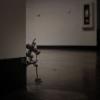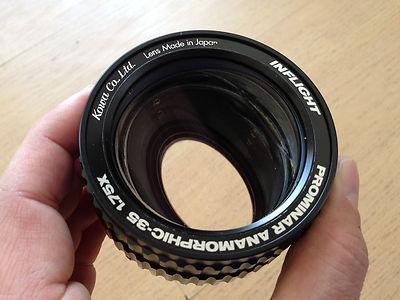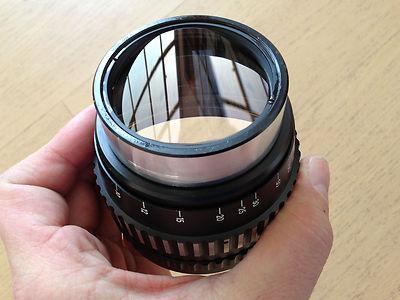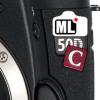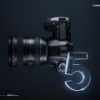Leaderboard
Popular Content
Showing content with the highest reputation on 03/22/2013 in all areas
-
I just bought a Sony DSC-RX100. After a couple years shooting my personal projects on a Canon 7D, I needed something more compact that I could carry with me at all times, and the Sony DSC-RX100 looked like it could be the one. The great reviews, the ability to shoot 1080p at 50fps with a fast Zeiss IS lens, full manual control in video mode, focus peaking and a 16mm sized sensor convinced me to go for it! My footage shot on the 7D improved quite a lot during the time I've been using it, knowing a camera's strong points and especially its limitations is very important to getting good images out of it, so the first thing I did with the Sony DSC-RX100 was to shoot some tests to help me decide which settings I'll be using when shooting video with it. Like most people around here I learn so much from online reviews and discussion forums, and those have been a great help deciding my gear purchases, so I'm sharing what I learned from my tests as a way to return the favor and give something back to the community. There's been some good reviews of the Sony DSC-RX100 online, and some useful info spread around the internet, but I think this post will cover a lot of useful information for whoever's interested in this camera for video, and much of this info will also apply for any other similar camera. I started by turning off all the automatic picture improvement options, as they usually degrade the quality of the image and make it less gradable, then I set the codec to AVCHD at 28mbits and 50p (PS). SHOOTING MODE For video shooting I'd recommend setting the top wheel to video mode and then selecting video-M for manual video shooting The RX100 does have a dedicated Movie Recording button, and can shoot video on any Stills mode, but you might get aspect ratio and exposure changes once you hit the Record button in these modes. In video-M mode you'll get what you see on screen. RECORD SETTINGS The Sony RX100 can shoot movies in two different formats, MP4 and AVCHD. All MP4 options are below 1080p resolution though, so I won't get into those. In AVCHD mode however, we get 3 different 1080 options: 50i 24M (FX) (50i @ 24Mbps, Blu-Ray AVCHD disc compliant) 50i 17M (FH) (50i @ 17Mbps, DVD AVCHD disc compliant) 50p 28M (PS) (50p @ 28Mbps, Progressive Scan) So it seems like we get 50i at 17Mbps and 24Mbps, and we get 50p at 28Mbps, but not really… The 50i mode is actually capturing 25p images out of the sensor and encoding them as 50i footage, this means that we do end up with interlaced footage, but since it was captured progressively, de-interlacing it will produce a clean 25p image! So if we're looking for the best possible video out of the RX100, we should use 50i 24M for 25fps video and 50p 28M for 50fps video. In theory, shooting 50i 24M gives us the best bitrate per frame in this camera, almost twice as much as shooting 50p 28M. Shooting 50fps however would have neighboring frames changing less than when shooting 25fps, helping the encoder do a better job, but still the per frame bitrate is lower, and here's a comparison that shows is. If you look at the darker areas in the back where the window is, you'll see that the 50i version is slightly cleaner. Here's an example of something in motion shot at 50i and 50p, the 50i frame was de-interlaced and as you can see there's no interlacing artifacts at all. Considering all of the above, I think it's safe to say that the 50i 24M mode, which is in fact 25p @ 24Mbps, will give you best video quality out of this camera. CREATIVE STYLES Creative Styles is the RX100's designation for Color Profiles. My first test was to choose the flattest Creative Style the camera had to offer, so I shot some footage of all the different styles. After looking at all these different images, I decided to go with the Portrait Creative Style, as it seems to be the flattest of them all. EXPLORING THE PORTRAIT CREATIVE STYLE Each Creative Style has settings for Contrast, Saturation and Sharpness that can be set from -3 to 3, so I shot some more footage using the Portrait Creative Style in a number of different settings. Using the Portrait Creative Style at the minimum settings (Contrast: -3, Saturation: -3, Sharpness: -3) definitely (and obviously) seems to be the flattest style in this camera, but I had to check how well it graded and how it compares to using the default values (Contrast: 0, Saturation: 0, Sharpness: 0). On the top left you have a frame shot using the Portrait Creative Style, with all the settings set to 0, on top right you have a frame shot using the Portrait Creative Style in its flattest settings (Contrast: -3, Saturation: -3, Sharpness: -3). On the bottom right frame I added some sharpness to the flat image, which responded quite well, and on the bottom left frame I added not only sharpness but also increased the Saturation and Contrast in order to match the top left frame (Contrast: 0, Saturation: 0, Sharpness: 0). The result is an image that matches in color saturation and contrast, but with a much nicer detail and less compression artifacts. It looks sharper and cleaner overall, which made me decide to use this Creative Style and these settings from now on. SHOOTING BLACK & WHITE The following test is something I've been wanting to do for a while, regardless of the camera. The thinking behind this test was: "If the camera is compressing B&W footage instead of color footage, maybe it can do a much better job at it since it doesn't have all the color information to process, so even using the same bit rate could give us better results." Of course I don't know the details on the cameras' inner workings, but assuming the B&W Creative Style is applied BEFORE the footage is compressed to AVCHD, then this should work. Maybe. So I shot some footage using the B&W Creative Style in its flattest settings (Contrast: -3, Saturation: -3, Sharpness: -3), which you can see on top left, and then some more footage using my new favorite Portrait Creative Style, also in its flattest settings (Contrast: -3, Saturation: -3, Sharpness: -3). On the middle left frame, I increased the sharpness and the contrast on the image to make it less flat, and on the middle right frame I did the same, and also desaturated it. As you can see both images are different, since the B&W Creative Style's color conversion is not merely desaturating the image to create a B&W version, it's using a more clever process that also looks better, but anyway, the point here is to test the image compression and figure out which one gives cleaner results, so on the last test frames I increased the exposure by 2 stops to find out how well the images handled it. On the bottom left frame you can see how much cleaner the image shot with the B&W Creative Style is, compared with the one shot using the Portrait Creative Style, it's actually beautifully clean and overexposing it by 2 stops didn't show any ugly artifacts at all. So my conclusion on this one is, if you're shooting for black and white, and you're sure that's the look you'll want (since it's kind of hard to color B&W footage if you change your mind afterwards), then using the B&W Creative Style will give you far superior results! DYNAMIC RANGE OPTIMIZER The Dynamic Range Optimizer works when writing to compressed formats, such as JPG, MP4 or AVCHD. It has no effect when shooting RAW. Its purpose is to capture more detail in the areas that are more prone to get lost when using compressed formats, such as dark shadows. It works in the darker areas of the image, making them brighter and producing a flatter image, which makes it easier on the image compression to achieve better results. Here's a test scene shot using all the DRO levels available. There's also an Auto Mode, but I suspect it wouldn't give predictable results when shooting manual video. The result is quite clear on every mode. Personally I think 5 is too much and might be actually degrading the image more than it helps, but lower settings definitely look not just useable but very useful in achieving a flat and clean image. I'd say using the DRO in its modes 2 and 3 would definitely help achieving a better flat image. I'll probably leave it at 2 all the time and increase it to 3 in situations with more contrast. 5DtoRGB I've used 5DtoRGB on Canon footage since the early beta versions, and I honestly don't understand how come it's not used by everyone. 5DtoRGB features one of the best YCbCr to RGB compression out there, and it's free!!! (the Pro version with batch capabilities costs $50 though) 5DtoRGB does a great job improving aliasing and compression artifacts and transcoding to 10-bit Prores (can also transcode do DPX image sequences and DNxHD files), or at least it did with Canon DSLR footage, so I thought I'd try it with the RX100. The top frame is from the original AVCHD file and the bottom frame is from the Prores transcoded file out of 5DtoRGB. 5DtoRGB automatically changed the Decoding Matrix setting to ITU-R BT.709, so I assume that's the one to use with the RX100 (Canon DSLRs like the 550D, 60D or 7D used the ITU-R BT.601 Decoding Matrix, the 5Dmk3 however used the ITU-R BT.709). Looking at it like this there's not much of a difference, so I went looking in the channels. The Red and Green channels looked quite clean in both versions, but looking closely at the Blue channel you can see how 5DtoRGB makes a pretty good job at smoothing out some of the compression blockiness, but mainly smoothing out the aliased lines you get on sharper edges. Using 5DtoRGB won't do any miracles, but when shooting to 8 bit compressed codecs, every little bit helps, and using it along with a flat Creative Style will definitely help you getting cleaner and better images. SHUTTER ANGLE / SHUTTER SPEED The Sony DSC-RX100 has the annoying feature of only shooting 50fps (or 60fps on NTSC markets). On one hand it's great to be able to shoot 50fps at 1080p, but on the other hand, shooting 25fps at the same bit rate would probably produce better results with less compression. One of the advantages of this could be that you'd always have the extra frames in case you needed the slow motion effect, but unfortunately that's not quite the case, since the ideal shutter speed for 25fps real time playback is different than the ideal shutter speed for 25fps slow motion playback. If you're planning on shooting for 25fps real time playback, then you should set your shutter to 1/50, but if you intend to shoot for slow motion playback at 25fps, then you should set your shutter speed to 1/100. Using a shutter speed of 1/100 for real time 25fps playback will not give you enough motion blur, and the motion playback will not be as smooth as it should. Also, playing back footage shot at 1/50 shutter speed at 25fps slow motion will have too much motion blur, making its motion look rather fuzzy. Here's a sample file you can download yourself. This was shot at AVCHD, 1080 50fps with a shutter speed of 1/50, meant to be used on a 25fps timeline, playing at real time: https://dl.dropbox.com/u/8569573/rx100review/RX100videoSample1.mov That's it for now, I really hope it helps some people out. I have some videos I can share later on if you're interested, and I also might update this review with tests of the different Steady Shot modes once I get to them. Keep in kind that these are only my findings and personal opinions, it would be great to hear from people with different opinions, or about settings you think would give better results. Enjoy!1 point
-
Here is a little tutorial for getting some extra ISO options on the GH3. It gives you two more ISO values between the ones that came preset with firmware 1.0. You just have to enable them. I'm not sure how widely known this trick is. I keep seeing ISO tests showing off ISO 200, ISO 400...etc. and nothing between. So, I hope this helps! https://vimeo.com/623990181 point
-
Hello EOSHD community, thank you for allowing me on your forum. I just ordered and received this week my SLR Magic HyperPrime 25mm Cine T/0.95. I emailed them last month and was placed on their pre-order list. I received an email from Jane at SLR Magic late last week stating they are taking payment for pre-orders. I completed payment via PayPal that night and the next day received an email that the lens was shipping that day, and I received the lens two days later! They are discounting the lens $150 for a limited time, and for the first 100 customers they are giving a free lens-specific 49mm-77mm step-up ring and lens cloth. I have not shot with the lens much yet, but so far image quality is very nice wide open at T/0.95. Of course, focusing at T/0.95 can be difficult as depth of field is beyond razor thin. I have posted only a few SOOC JPEG samples from my GH3 and plan to upload more as I can. I bought this lens primarily for video on my GH3 and will also be posting some sample video when I can. So far it is an incredible lens, in both build and image quality. I am new to shooting video and the info I have found on this forum have been invaluable. Again, thank you. http://www.flickr.com/photos/ludacliff_78/sets/72157632997278386/1 point
-
Got my grubby mitts on a Kowa 1.75X and have been pretty impressed with the results so far. Minimum focus seems to be 40 inches without diopter. I am currently re-aligning the optic assembly so that proper sharpness can be obtained, then re-setting the focus ring to engage properly (sounds scary, but it's a lovely and simple design that even I can understand...*smash) - Boring & ugly footage I know, it was intended to test overall sharpness of minimum focus and low light performance F2 - F2.8 without diopter. I could not move the camera very much, as I had to hold the glass together temporarily whilst I carried out the tests for repair. *edit - sorry for the nasty iphone flare, was to check orientation I promise. This video is intended to put some Kowa Inflight 1.75X content out there, as when I searched the web, there was next to no footage to be found...I wonder if this is a bit of a rare beasty? https://vimeo.com/624067921 point
-
That's what I love about cheap video cameras like DSLRs, I can constantly practice, and then I I wanna use a red for a day, I can make magic without bankruptcy. Woop!1 point
-
that's another reason I've not bought a new body. Lenses yes... But body hire is good for things with budgets I shot two videos in one weekend with the FS700 and used my own lenses. 250 pounds of hire for all the kit and the metabones EF adaptor and batteries and cards and so on... On the budget. When it's unbudgeted shoots or personal things I can use what I've got. I suppose i could buy something for both... But I haven't a need at the moment. But I want to ;) it's lust really. The busiest camera guy I know doesn't own anything. Not even a tripod. The other busiest has a C300. Theres loads of ways to do it! It is a fair point, if you have a totally awesome story and shoot it and get picked up you're less likely to need to need to care. It's pretty competative out there though...1 point
-
Christopher Doyle calls out The Academy over Oscar for Cinematography
Andrew Reid reacted to Bruno for a topic
You show a huge lack of understanding regarding the VFX studios' situation for someone who won't stop speaking about it. The main VFX facilities only have 5 clients (Warner, Fox, Sony, Paramount, Disney), they don't need marketing people telling their own 5 clients they exist. The fact there's only 5 serious clients in the industry is also one of their problems, since they obviously don't want to upset any of them by denying to work with them or asking for extra money to pay for the extra work they hadn't bid on. If you only had 5 possible clients and they all worked with you regularly, would you create a "sales and marketing" department to tell your 5 clients about the work you do for them? Don't be ridiculous.1 point -
Kowa Prominar Inflight Anamorphic-35 1.75X
Hans Punk reacted to tony wilson for a topic
nice optic most are trashed they where designed for movie projection on 707 airplanes in the 1970s. the tavistock institute and the cia also used them for mind control work cinemascopic image projections into each eyeball. like the parallax corporation the inflight group did a lot of custom optics for the military. sometimes kowa sometimes isco was used. check and clean the body if blood stains are spotted1 point -
Zeiss 50mm Ultrascope?
jgharding reacted to tony wilson for a topic
how about bozo here buying an iscorama 36 from one of those fucking mega dealers in eastern europe got it cheap buy it now 1600 euros. it arrived body was mint condition looked inside no glass anamorphic glass. the front 2 focus optics where all happy and new looking but behind them nothing an iscorama spherical optic. no bent glass anywhere. i contacted the scum trader and he replied by saying he tested it and it worked well : ) got my money back after plenty of abuse...i then gave him 300 euros for the 2 optics and the body1 point -

'New' Canon SL1 / 100D and T5i / 700D fail to excite
jgharding reacted to Andrew Reid for a topic
They were an innovative company up to the point of the world-wide recession and global financial troubles in 2008-09. This scared the Japanese corporations into being more conservative and consolidating what they had. They've also had to contend with a dying compact camera market, natural disasters, unfavourable currency rates and in the case of Sony & Panasonic, a dying TV market. For an entire generation of people compacts and TVs have given way to phones and computers. Canon and Panasonic should be providing their optics and sensors to smart phone makers like Sony. The cameras should be refreshed every year to take advantage of doubling CPU speeds. They need to get their house in order and stop acting like photographic companies and more like the computer companies they'll need to become in order to compete in the future.1 point -
'New' Canon SL1 / 100D and T5i / 700D fail to excite
jgharding reacted to Bioskop.Inc for a topic
You could pick up a 5D2 + Mosaic Filter for less than the 5D3 - you get better stills & pretty much the same video. Got to remember that Canon cameras are stills first & video second - so all new cameras are aimed at the stills market & not video! So its business as usual in the capitalist market place! 7D2 & 70D will be just as disappointing - a leopard just won't change its spots!1 point -
Not true, at least for photography. Canon EOS 300D: first consumer dslr Canon EOS 5D: first fullframe consumer dslr Canon EOS 5D Mark II: first fullframe dslr with film function Up till the 5D II and 550D, Canon was always pretty innovative and providing a lot of bang for your bucks.1 point
-
Nice looking footage! Did you use warp stabilisation on the above video? The flares are bouncing around, where as the frame stays quite smooth. Admittedly I'm confused over why the flare doesn't stabilise with the whole frame though...I need coffee.1 point
-
Kowa Prominar Inflight Anamorphic-35 1.75X
Hans Punk reacted to Bioskop.Inc for a topic
Looks good - Kowa's always are. Yeah i checked as well & all i could find was reference to the x1.5 version - so the x1.75 must be rare.1 point -
I agree too....I recently picked one up (Iscomorphot 8/2x) for just over £40 in decent condition. put it on a Helios 44 with diopters and you have a very sassy x2 fixed focus for portraits or medium distance use. The shallow depth of field is a wonder to behold! I bought it, then realised it was the same as the type in the Isco shootout video...made me very happy, that video is so nice.1 point
-
I'd love to show up at a press conference with one,LOL1 point
-

Nikon V1 - shooting 4K 60fps raw for $200
richg101 reacted to Andrew Reid for a topic
Got my V2 today... Some observations... The good: Full manual control in burst mode Adaptable lenses in burst mode Stores up to 40 frames instead of 30 in burst mode Handling is better Drastically improved write times to the card (around 15 seconds for 40 raw files instead of 1 minute for 30 on the V1) 4.6K vs 3.8K sensor The bad: It is noisier at high ISOs than the V1 Battery is smaller (1450mAh vs 1900mAh) Slow mo only records to 3 seconds, down from 5 seconds on the V1 Slow mo quality is not as good - noisier and very slightly softer I like the camera but it is a real shame the new sensor wasn't kept at 10MP and the slow-mo improved. It is a bit of a backward step for high ISOs and slow-mo, which is a surprise. For bust mode 4K raw it is much better though. Haven't tested HDMI yet, will be interesting to see if that is clean this time. It wasn't on the V1. The auto-gain of the screen is still there and you can't turn off the eye sensor on the EVF. Slightly annoying aspects. Also the manual focus aid only works with CX lenses and even crueler - they take away the exposure meter when you attach a non Nikon CX lens. Fools! You have to use video mode to simulate exposure and take stills in that mode. No problem until you realise it only shoots JPEG in that mode. Pain!1 point -
Canon peddling same old tech in a new package again. If they don't deliver 4:2:2 internal recording on the 7D2 I'm bailing out on them. 16 days left till NAB. Tick, tock, Canon. B)1 point
-
I can only assume Canon fired all their engineers and scientists in 2008 and have employed only people in marketing since then. There is no other explanation.1 point
-
Indeed, The last innovation was the 550D really, because it brought the shallow DOF S35 video of the 7D to a budget body. The best of that bunch is the 600D with crop mode and flip out screen, and Magic Lantern. Since then, only the 5D MKiii has actually improved on video quality. That's expensive, the C series of video cameras are extortionate. Unless they depart radically with the 7D MKii or a similar DSLR leaning towards video, we can't hope for anything other than the disappointing 720p for double frame rate, and huge price if you want aliasing-free video without an after-market filter. Taking 720/50p out of the C100 just to separate the C300 was just scandalous really, considering their cheap SLRs do it from an 18MP sensor. I don't think anyone could quite believe the level of "f**k you" in that camera! And as you quite rightly say, how can we expect anything like innovation when they refuse to even come close to matching the other companies, and even hold back their top-of-the-line C500 unless you use external recording? It's just so disappointing, from the people who started it all in the first place.1 point
-
Hey Andy.. This vid should explain what the circular masks do... http://vimeo.com/613416721 point


